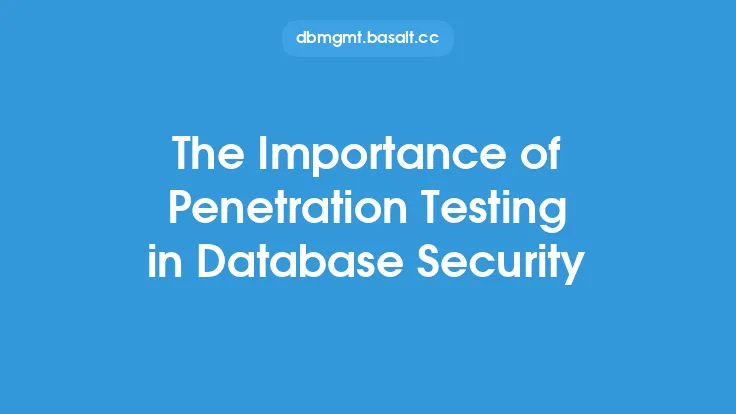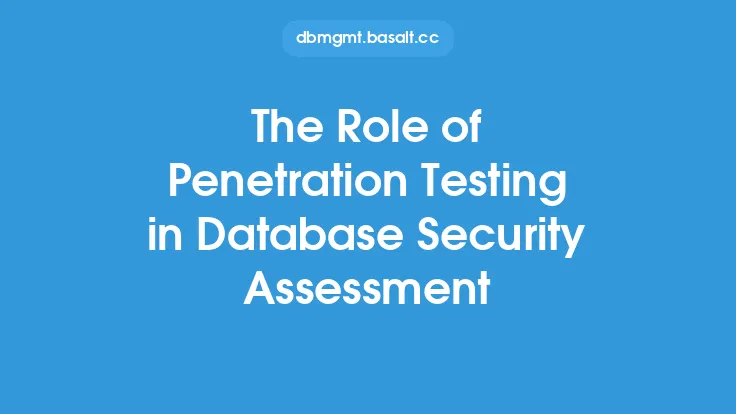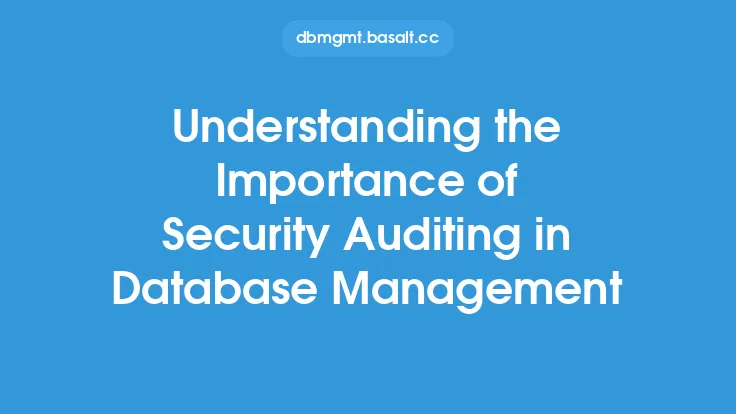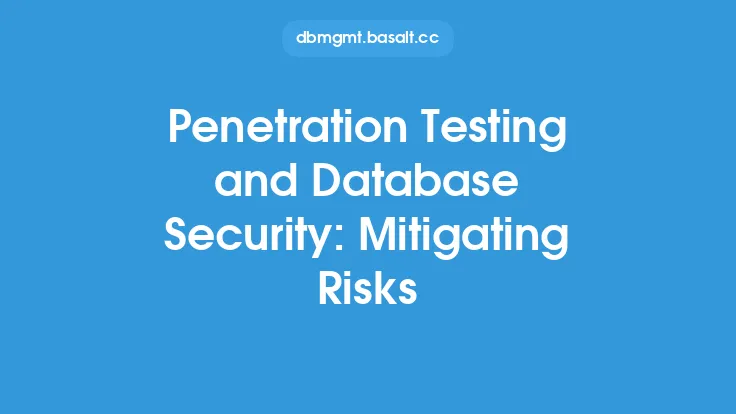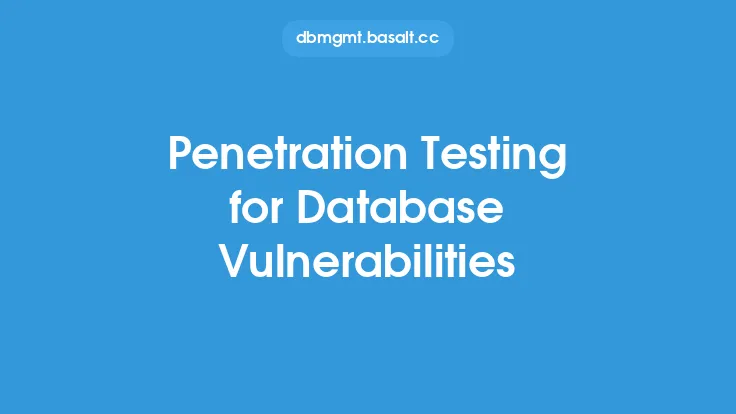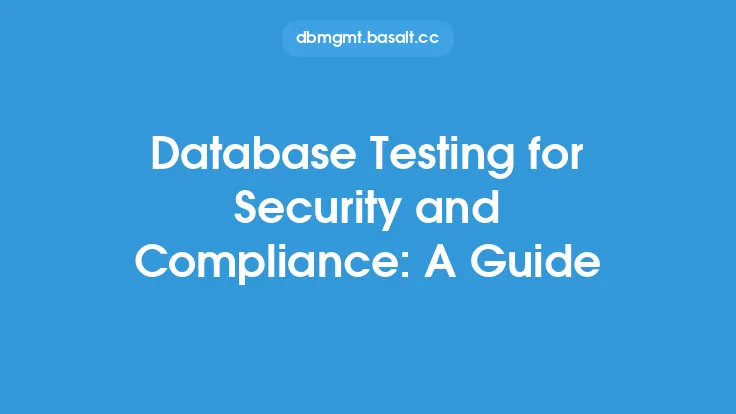Penetration testing, often abbreviated as pen testing, is a simulated cyber attack against a database system to assess its security vulnerabilities. The primary goal of penetration testing in database security is to identify weaknesses and vulnerabilities in the database's defenses, which an attacker could exploit to gain unauthorized access, disrupt operations, or steal sensitive data. This process involves a thorough analysis of the database's configuration, network connections, and access controls to determine its resilience against various types of attacks.
Introduction to Penetration Testing Concepts
In the context of database security, penetration testing is a critical component of a comprehensive security strategy. It involves a systematic approach to testing a database's defenses, using a variety of techniques and tools to simulate real-world attacks. Penetration testers, also known as ethical hackers, use their skills and expertise to attempt to breach the database's security controls, just as a malicious attacker would. The key difference, however, is that penetration testers do so with the permission of the database owners, and their goal is to identify vulnerabilities and provide recommendations for remediation, rather than to cause harm.
Types of Penetration Testing
There are several types of penetration testing that can be applied to database security, each with its own specific goals and methodologies. Black box testing, for example, involves testing a database's security without any prior knowledge of its configuration or internal workings. This type of testing simulates a real-world attack, where an attacker would have to gather information about the database through reconnaissance and other means. White box testing, on the other hand, involves testing a database's security with full knowledge of its configuration and internal workings. This type of testing is useful for identifying vulnerabilities that may not be apparent through black box testing. Gray box testing is a hybrid approach that combines elements of both black box and white box testing.
Penetration Testing Techniques
Penetration testers use a variety of techniques to test a database's security, including network scanning, vulnerability exploitation, and social engineering. Network scanning involves using tools to identify open ports and services on the database server, as well as to detect any vulnerabilities in the network configuration. Vulnerability exploitation involves attempting to exploit known vulnerabilities in the database software or its underlying operating system. Social engineering involves attempting to trick database administrators or other authorized personnel into revealing sensitive information or providing access to the database.
Database Penetration Testing Phases
The penetration testing process typically involves several phases, each with its own specific goals and objectives. The first phase is planning and reconnaissance, where the penetration tester gathers information about the database and its environment. This may involve conducting open-source intelligence gathering, network scanning, and other forms of reconnaissance. The second phase is exploitation, where the penetration tester attempts to exploit vulnerabilities in the database or its underlying systems. The third phase is post-exploitation, where the penetration tester attempts to maintain access to the database and gather sensitive information. The final phase is reporting and remediation, where the penetration tester provides a detailed report of the vulnerabilities identified and recommends remediation strategies.
Benefits of Penetration Testing
Penetration testing provides several benefits for database security, including identifying vulnerabilities and weaknesses, testing incident response plans, and meeting compliance requirements. By identifying vulnerabilities and weaknesses, penetration testing can help database administrators and security teams to prioritize remediation efforts and allocate resources more effectively. Penetration testing can also help to test incident response plans, by simulating real-world attacks and evaluating the response of the security team. Finally, penetration testing can help organizations to meet compliance requirements, by providing evidence of due diligence and a commitment to security.
Challenges and Limitations
Despite its benefits, penetration testing also has several challenges and limitations. One of the main challenges is the risk of disrupting database operations or causing unintended consequences. Penetration testing can also be time-consuming and resource-intensive, requiring significant expertise and specialized tools. Additionally, penetration testing may not identify all vulnerabilities or weaknesses, particularly if the testing is not comprehensive or if the testers lack the necessary expertise. Finally, penetration testing is not a one-time event, but rather an ongoing process that requires regular testing and evaluation to ensure the continued security of the database.
Conclusion
In conclusion, penetration testing is a critical component of database security, providing a systematic approach to identifying vulnerabilities and weaknesses in the database's defenses. By using a variety of techniques and tools, penetration testers can simulate real-world attacks and provide recommendations for remediation. While penetration testing has several benefits, it also has challenges and limitations, including the risk of disruption, the need for expertise and resources, and the potential for incomplete or inaccurate results. Nevertheless, penetration testing remains an essential tool for ensuring the security and integrity of databases, and for protecting sensitive data from unauthorized access or theft.
